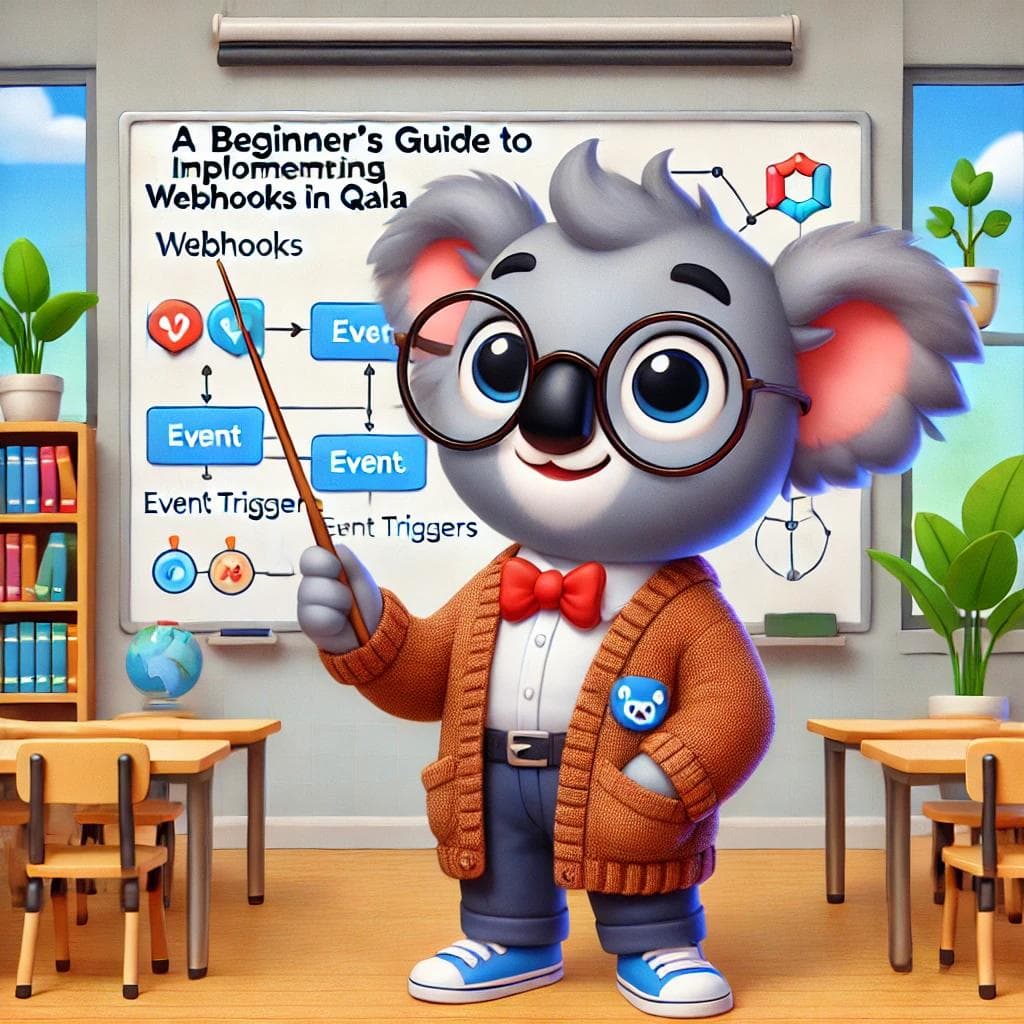How to Set Up and Manage Q-Flow Event Notifications Effectively
Posted on the 11th of March, 2025

Event notifications are the backbone of real-time applications, seamlessly integrating data and users across various systems. In Q-Flow, these notifications are delivered via webhooks in an event-driven architecture, allowing you to push vital information directly to your subscribers.
In this guide, we’ll cover:
- Topic management for flexible and focused event distribution
- Subscription creation, advanced filtering, Transformations & aggregations for tailored payloads
- Configuring retries for reliable delivery
- Dead lettering and event replay for resilience
Let’s dive in.
Defining & Managing Topics
A Topic in Q-Flow can be seen as a logical grouping of events. It could represent a broad subject like “Order Events”, multiple related categories, or even be limited to very specific circumstances like a particular tenant or team.
Flexibility in Topic Management
- Specific Subject: A single, narrowly-defined Topic such as order_events or user_signups—useful when you want tight control over who gets what notifications.
- Multiple Categories: A broader Topic like marketing_activities, which might include email campaigns, social media updates, and event promotions under one umbrella.
- Scoped to an Organization, Function, or Team: A Topic like acme_tenant_events ensures that only the relevant company or department sees those updates. This helps isolate data, reinforcing privacy and compliance.
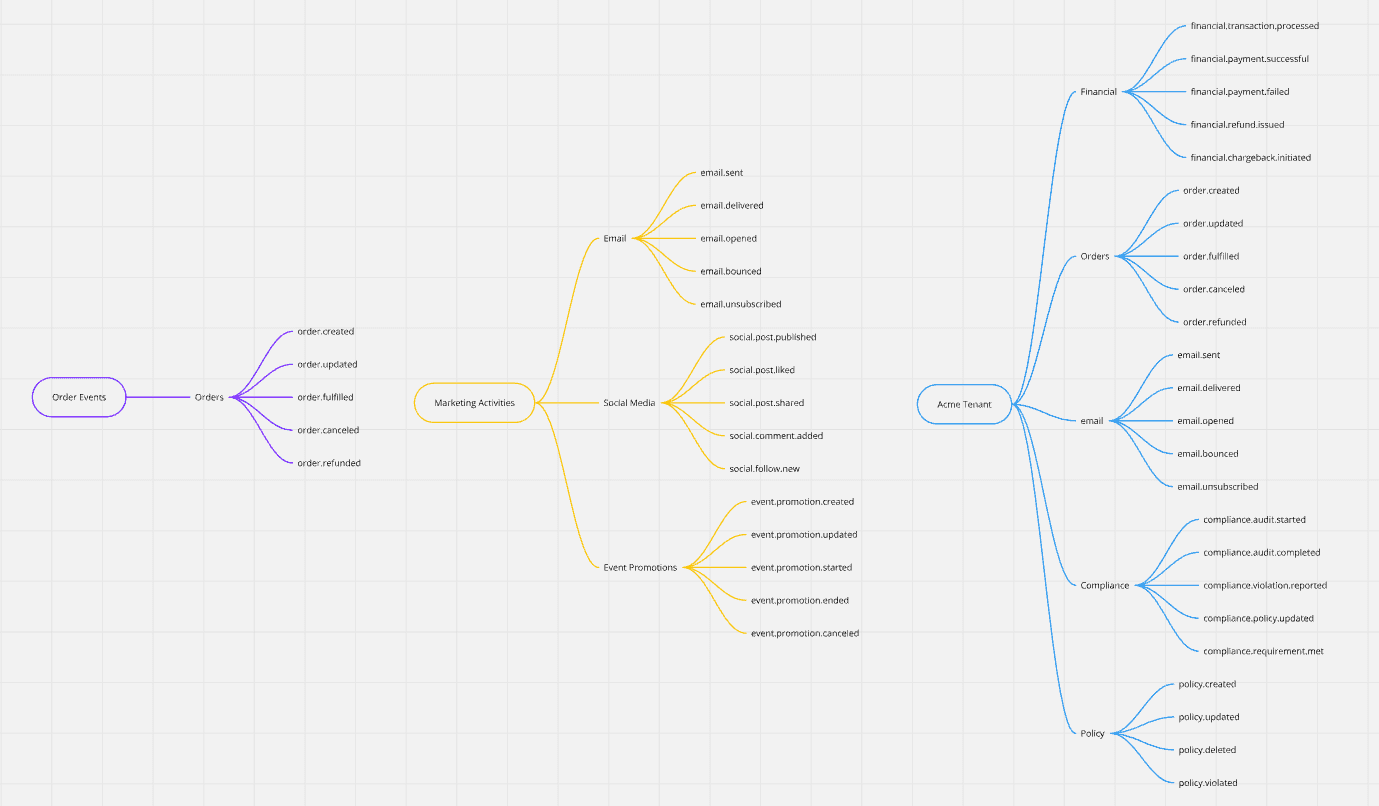
Why Does It Matter?
Topics ensure that subscribers are only notified about events pertaining to their specific interests or functions, reducing unnecessary data processing and keeping potential regulatory concerns in check.
Subscribing to Notifications
Once you’ve defined a Topic, you can set up a Subscription to link that Topic with an external endpoint. Think of a Subscription as an instruction that says, “Send me all events—or filtered subsets—from topic_X to my endpoint_Y.”
Advanced Filtering
You don’t always need to process every event for a Subscription. Advanced filtering allows you to narrow down exactly what’s delivered to your endpoint, based on criteria like amounts, statuses, or any custom fields within the event payload.
Example for filtering on event payload
1SELECT *2FROM events3WHERE eventType = 'PURCHASE'4 AND data.status = 'COMPLETED';
Here, we’ll only retrieve events where the event type is a PURCHASE, and the status is COMPLETED.
Transformations
Transformations let you reshape the data before it’s sent. Common use cases include:
- Redacting sensitive information
- Renaming fields to match internal naming conventions
- Simplifying or flattening nested structures
Example for redacting transformation
1SELECT2 event_id,3 user_id,4 'Redacted' AS redacted_user_name,5 CONCAT('****@', SUBSTR(email, INSTR(email, '@') + 1)) AS redacted_email,6 '****' AS redacted_payment_card,7 '****' AS redacted_billing_address,8 '****' AS redacted_phone_number,9 timestamp10FROM events;
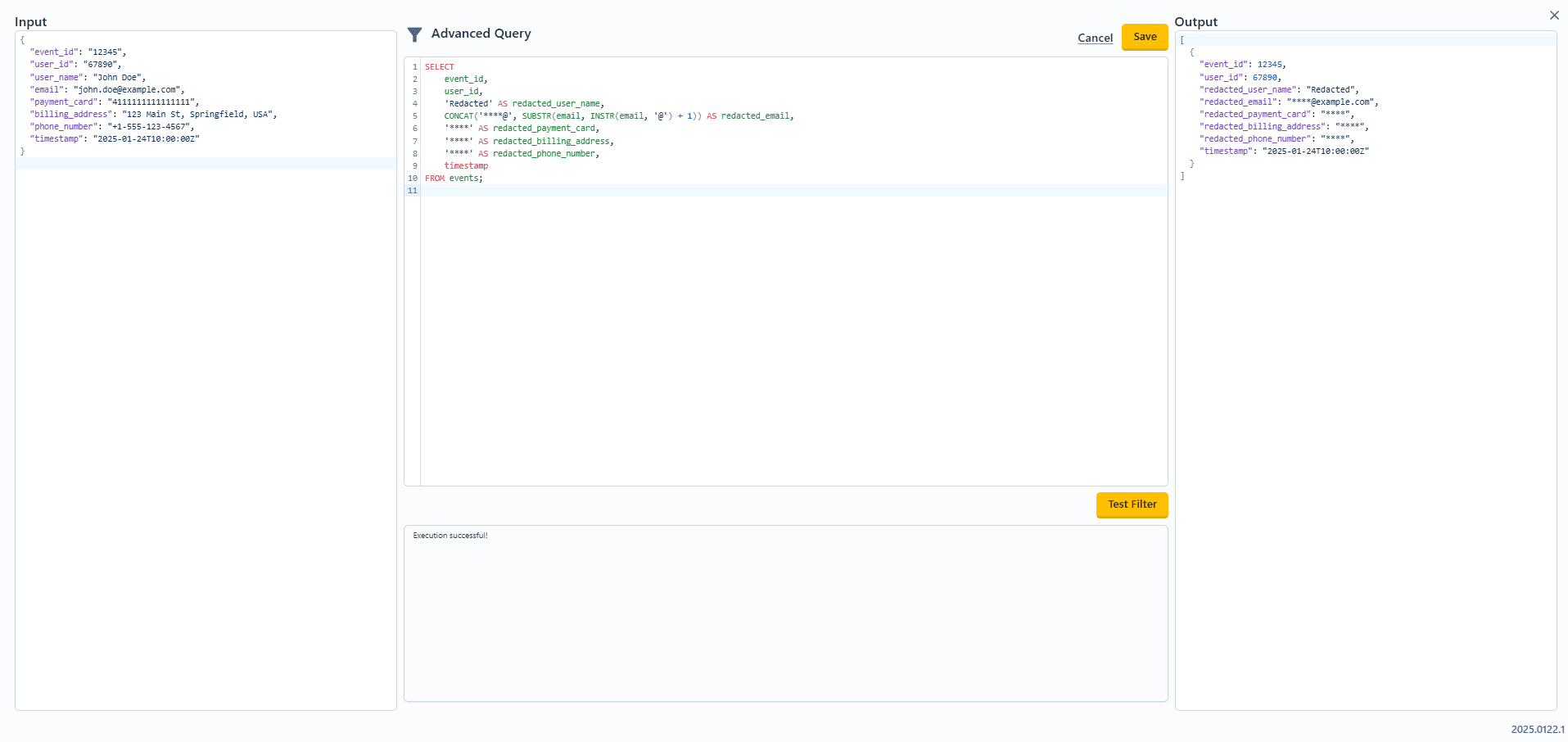
Aggregations
Aggregations let you batch multiple events into a single notification or perform advanced operations on grouped data. You can configure it based on time windows, event counts, or even run custom queries to derive insights from the aggregated set of events.
Advanced Aggregation with SQL
Sometimes you want deeper analytics from your events before pushing them downstream. For instance, you might need to find the top 3 largest amounts for each payment event type:
1WITH ranked_payments AS (2 SELECT3 type,4 CAST(json_extract_string(data, '$.amount') AS DOUBLE) AS amount,5 ROW_NUMBER() OVER (6 PARTITION BY type7 ORDER BY CAST(json_extract_string(data, '$.amount') AS DOUBLE) DESC8 ) AS rn9 FROM events10 WHERE type LIKE 'payment.%'11)12SELECT *13FROM ranked_payments14WHERE rn <= 315ORDER BY type, amount DESC;
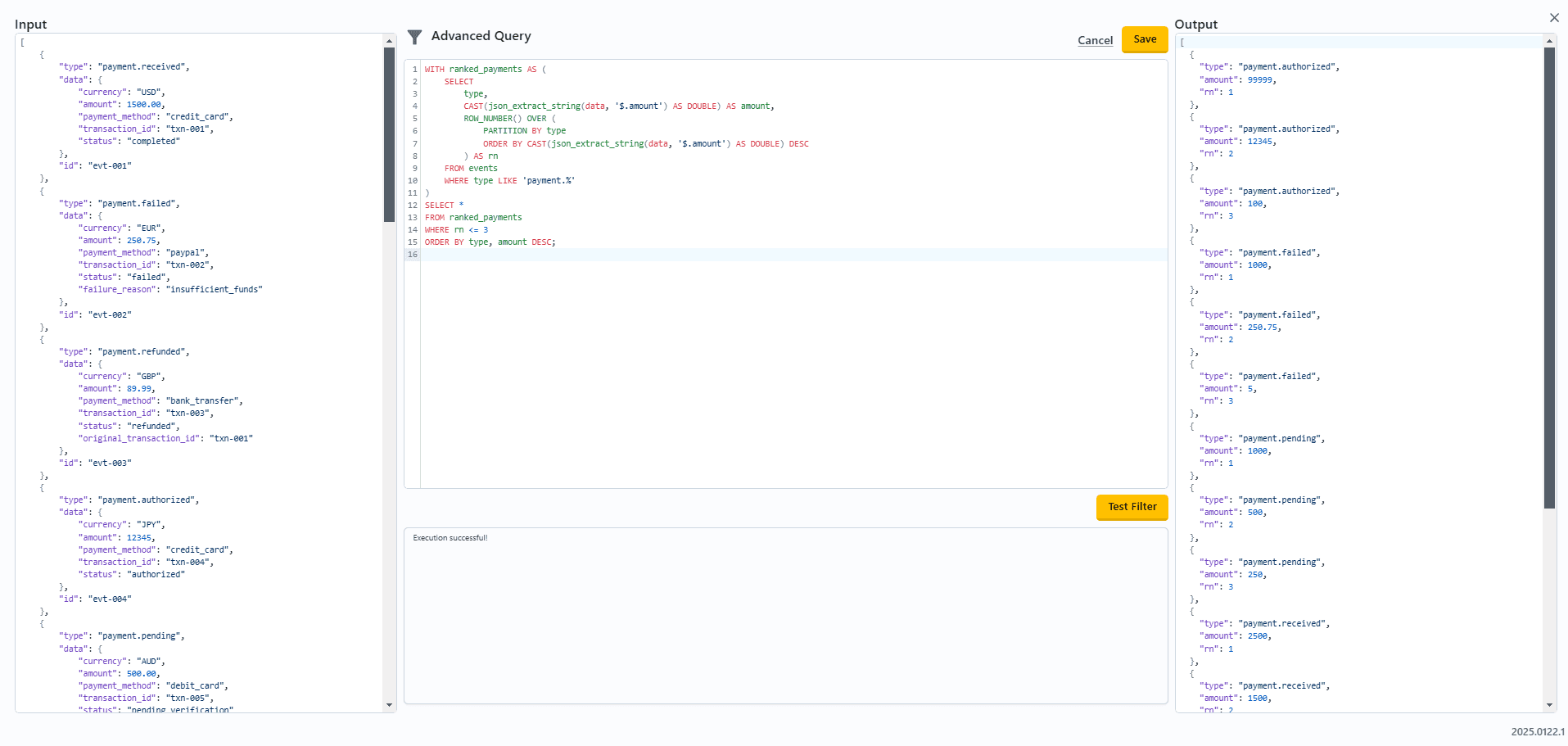
How It Works:
- We filter to payment.* event types.
- We cast the amount field to a numeric type for sorting.
- We rank each payment by amount within its event type, then pick the top 3.
While the exact SQL query depends on your specific use case, an advanced aggregation query like this can pre-process events for downstream services, reducing the need for separate analytics pipelines.
Configuring Retries for Subscription Endpoints
Reliability is crucial in any notification system. Q-Flow handles potential downtime or sluggish responses via retries:
- Initial Delivery Attempt: Q-Flow waits 30 seconds for your endpoint to respond (typically a 200 OK or equivalent).
- Exponential Backoff: If the endpoint doesn’t respond, Q-Flow queues the message for a retry, waiting progressively longer intervals before each attempt.
- Configurable Maximum Retries: You can define how many times Q-Flow should attempt delivery before giving up—up to a maximum that can span 24 hours.
When Long Retries Help
- Non-Time-Sensitive Systems: If your analytics pipeline can tolerate a delay, you’ll still want the data eventually, even if it’s 3/6/9 hours late. Configuring max retries over a 24-hour period ensures you don’t lose key insights.
When Short Retries Are Better
- Time-Sensitive Journeys: For a real-time user engagement or “warm journey,” receiving an event 12/18 hours late is worse than not receiving it at all. In this case, configure fewer or shorter retries so you aren’t sending/responding to stale data.
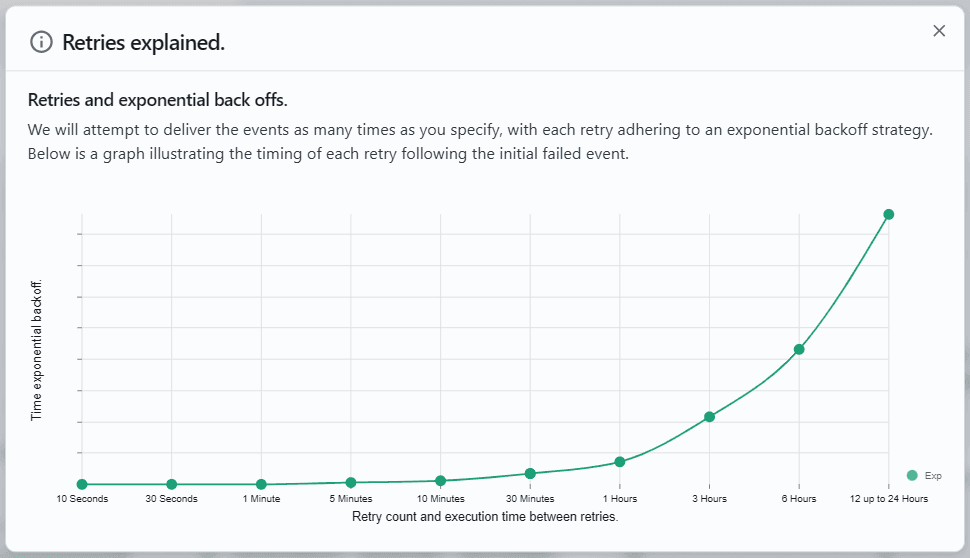
Tip: Tailor maxAttempts to the criticality of the events or function—lower attempts for real-time scenarios, higher attempts for background data processing.
Dead Lettering & Event Replay
Despite retries, there may be situations where the endpoint simply can’t accept an event—maybe it’s offline for extended maintenance, or there’s a downstream failure.
- Dead Letter Queue: When maximum retries are exhausted, those undelivered events are “dead-lettered” and stored in your Subscription, abiding by retention rules.
- Replay Events: You can choose to replay a specific set of dead-lettered events (e.g., those that are time-sensitive) or replay all events within a certain window.
Why This Matters
- No Missed Data: You have full control over resending events once your system is healthy again.
- Selective Replay: If an event is no longer relevant (e.g., a time-sensitive promo after the discount period), you don’t have to replay it, avoiding noise and confusion.
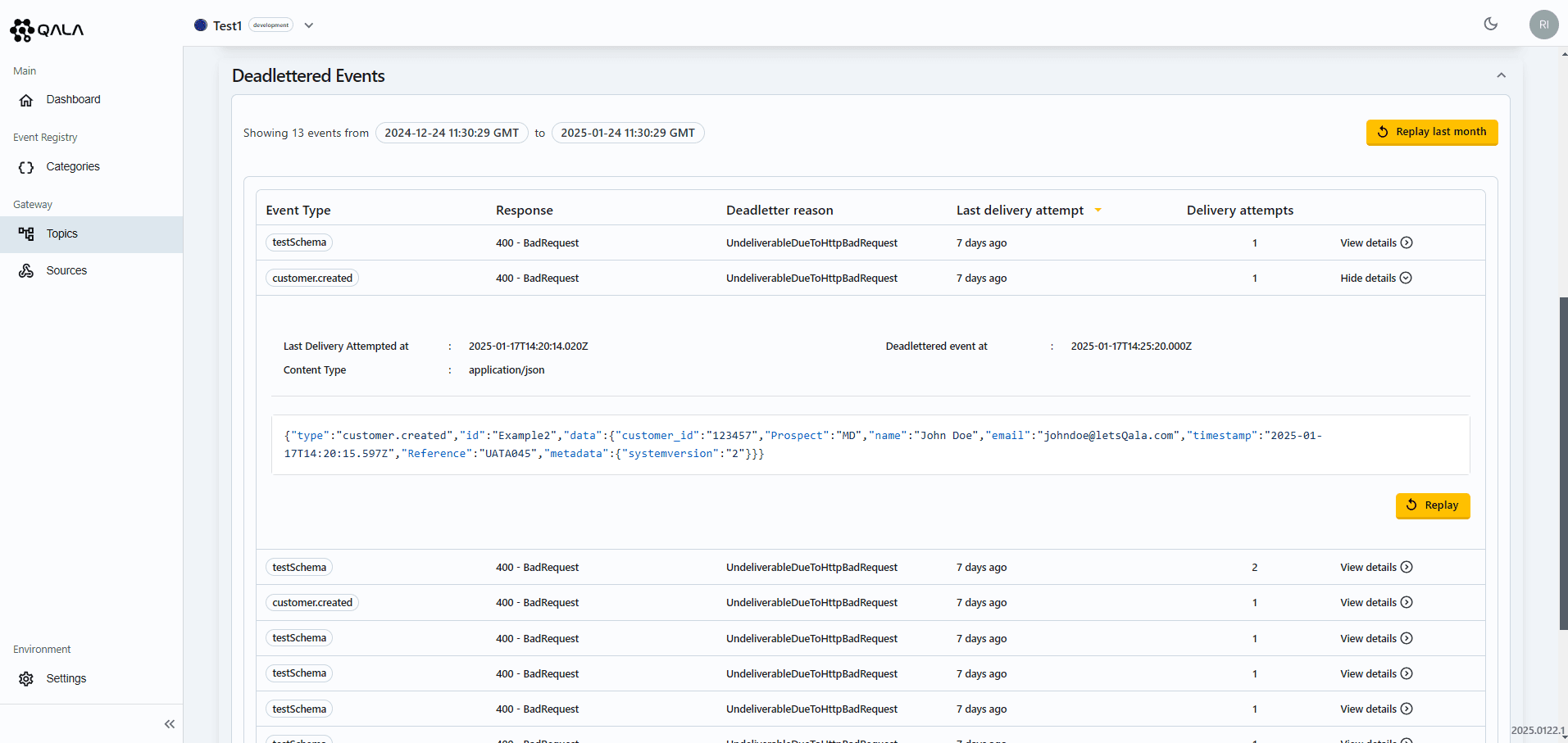
Best Practices & Tips
a. Use Well-Defined Webhook Events
Reference our previously discussed principles in The Importance of Well-Defined Webhook Events:
- Clear Context: e.g., order.created, order.updated.
- Sufficient Data: Provide enough info so the consumer doesn’t require multiple follow-up calls/clarification.
- Consistent Naming: Keep event types predictable across Topics.
b. Plan for Growth
- Flexible Topics: Start small, but design with expansion in mind (e.g., multiple categories, scoping by tenant).
- Multiple Endpoints: Different teams might need the same events but want them delivered to separate URLs with additional filtering, transformation or aggregation.
c. Monitor & Log
- Leverage Q-Flow’s Dashboard: Track delivery success, retry counts, and potential bottlenecks.
Conclusion
Building a reliable notification framework in Q-Flow hinges on thoughtful Topic definitions, targeted Subscriptions, and robust error-handling mechanisms—like configurable retries and dead-lettering. By leveraging advanced filtering, transformation, and both basic and SQL-driven aggregation, you ensure only relevant, timely data reaches your endpoints. And if something goes wrong? Replays and exponential backoff help you catch up without skipping a beat.
Feel free to comment or ask questions about customizing Q-Flow notifications for your use case.
